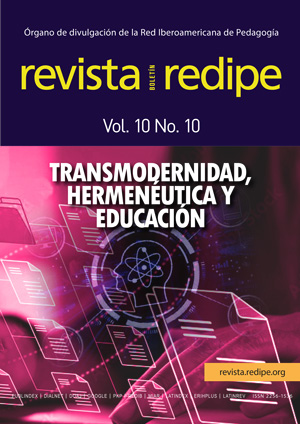Explorando relaciones entre la resolución de problemas de física y matemática
##plugins.themes.bootstrap3.article.main##
Keywords
Resolución de problemas de física, Resolución de problemas de matemáticas, sistemas de ecuaciones lineales, estudio de caso.
Resumen
Las caracterizaciones acerca de la resolución de problemas de física y matemática generalmente se han realizado por vías diferentes. En contraste, estudios conjuntos de estos dos constructos han sido poco abordados. Este reporte, muestra los resultados de una investigación cualitativa, desde un estudio de caso que responde a la pregunta: ¿cómo son las relaciones entre la resolución de problemas de física y matemática que involucran circuitos y sistemas de ecuaciones lineales, manifestadas por un grupo de estudiantes de ingeniería de sistemas? Como fuentes de recolección de información se diseñaron e implementaron seis secuencias de aprendizajes. El análisis de datos se realizó siguiendo los procesos simultáneos de codificación abierta, axial y selectiva. Los hallazgos muestran como los estudiantes utilizan el conocimiento que tiene a su disposición, descubren y construyen relaciones matemáticas formalizando leyes físicas, además de generalizar y utilizar métodos para resolver sistemas de ecuaciones lineales. Los resultados evidencian una relación clara de inclusión de las estrategias para resolver problemas de matemáticas entre las estrategias para resolver problemas de física, caracterizadas por un flujo de trabajo simultaneo, cíclico y permanente sobre el problema.
Referencias
Bing, T., & Redish, E. (2009). Analyzing problem solving using math in physics: Epistemological framing via warrants. Physical Review Special Topics-Physics Education Research, 5(2), 020108. doi:10.1103/PhysRevSTPER.5.020108
Charmaz, K. (2006). Constructing grounded theory: A practical guide through qualitative analysis. London: Sage Publications.
Charmaz, K. (2014). Constructing grounded theory (2 ed.). Thousand Oaks, CA: Sage.
Corbin, J., & Strauss, A. (2017). Conceptos básicos de la investigación cualitativa: técnicas y procedimientos para desarrollar la teoría fundamentada (4 ed.). Thousand Oaks, California, United States of America: SAGE Publications.
De Ataíde, A., & Greca, I. (2012). Epistemic Views of the Relationship Between Physics and Mathematics: Its Influence on the Approach of Undergraduate Students to Problem Solving. Science and Education, 22(6), 1405-1421. doi: 10.1007/s11191-012-9492-2 Ernest, P. (2005). Social Constructivism and the Psychology. En P.
Ernest (Ed.), Constructing Mathematical Knowledge: Epistemology and Mathematics. London: Taylor & Francis e-Library.
Gaigher, E., Rogan, J., & Braun, M. (2007). Exploring the Development of Conceptual Understanding through Structured Problem‐solving in Physics. International Journal of Science Education, 29(9), 1089-1110. doi:10.1080/09500690600930972
Greeno, J. (1989). Situations, mental models, and generative knowledge. En D. Klarh, & K. Kotovsky (Edits.), Complex information processing: The impact of Herbert A. Simon (págs. 285-318).
Jensen, J., Niss, M., & Jankvist, U. (2017). Problem solving in the borderland between mathematics and physics. International Journal of Mathematical Education in Science and Technology, 48(1), 1-15. doi:10.1080/002073 9X.2016.1206979
Koman, B., & Hill, D. (2006). Algebra Liineal (8 ed.). (V. Ibarra Mercado, Trad.) México, México: Pearson Educación. Mason, J., Burton, L., & Stacey, K. (2010). Thinking Mathematically (2 ed.). Harlow, UK: Pearson Education Limited.
Mayer, R. (2010). Problem Solving and Reasoning. International Encyclopedia of Education, 273-278. doi:10.1016/ B978-0-08-044894-7.00487-5
Miles, M., Huberman, A., & Saldaña, J. (2018). Qualitative data analysis: A methods sourcebook (3 ed.). USA: Sage publications.
Polya, G. (1945). How To Solve It. Princeton: Princeton University Press.
Polya, G. (1981). Mathematical Discovery. New York: Wiley.
Quale , A. (2010). On the Role of Mathematics in Physics. Science & Education, 20(3- 4), 359-372. doi:10.1007/s11191-010- 9278-3
Redish, E. (2006). Problem solving and the use of math in physics courses. arXiv:physics/0608268v1.
Redish, E., & Bing, T. (2009). Using math in physics: Warrants and epistemological frames. Girep-Epec & Phec. 71.
Scanlon, E. (1993). Solving the problem of physics problem solving. International Journal of Mathematical Education in Science and Technology, 24(3), 349- 358. doi:10.1080/0020739930240303
Schoenfeld, A. H. (2016). Learning to think mathematically: Problem solving, metacognition, and sense making in mathematics (Reprint). Journal of Education, 196(2), 1- 38. doi:10.1177/002205741619600202
Von Glasersfeld, E. (2013). Radical constructivism (Vol. 6). Routledge.



